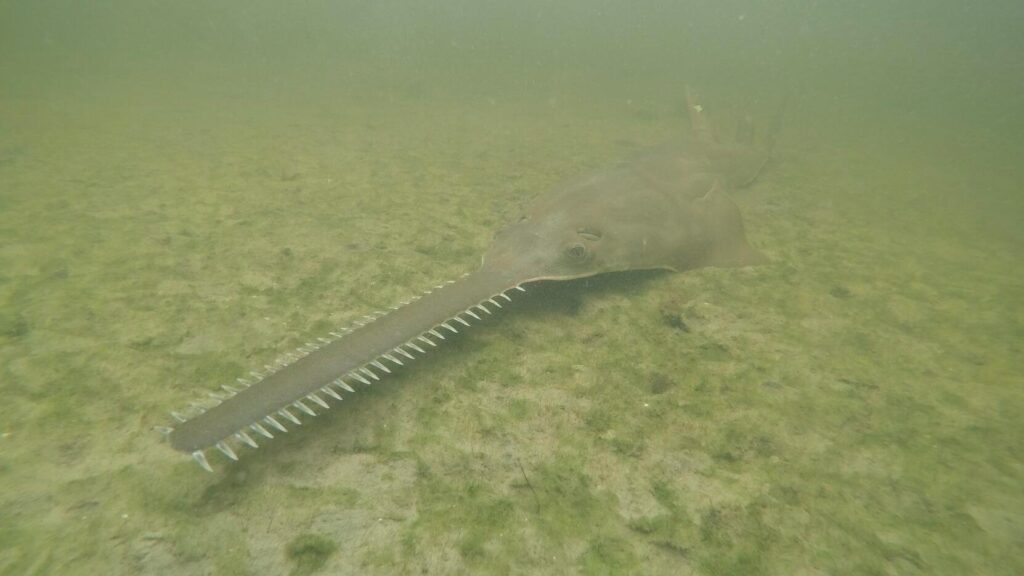
Florida’s waters are home to a strange phenomenon – critically endangered smalltooth sawfish are exhibiting erratic spinning behavior, and dozens have died under mysterious circumstances. This troubling situation has prompted NOAA Fisheries to launch an unprecedented emergency response effort.
The plight of the sawfish is dire. These fascinating creatures, with their distinctive saw-like snouts, are already classified as critically endangered. Now, their unusual behavior and unexplained deaths have cast a shadow over their future. In response, NOAA Fisheries, along with conservation organizations and aquariums, have joined forces in a unique mission – to rescue and rehabilitate the ailing sawfish.
“If the opportunity arises, this would mark the first-ever attempt to rescue and rehabilitate smalltooth sawfish from the wild,” declared Adam Brame, NOAA Fisheries’ sawfish recovery coordinator. Their aim is clear: to nurse these sawfish back to health and release them safely back into their natural habitat.

Image credit: Dana Bethea/NOAA Fisheries
As of March 24th, a concerning number of sawfish – 109 – have been affected, with 28 confirmed deaths. The situation appears particularly grim for larger sawfish, with individuals measuring between 7 and 14 feet in length being the most impacted.
“We suspect the actual mortality rate is even higher,” Brame added, “as sawfish, due to their negative buoyancy, are unlikely to surface after death.” Given the already dwindling population of smalltooth sawfish, the loss of even a few dozen can significantly hinder the species’ recovery efforts.
Sawfish, with their unique snouts lined with sharp teeth, resemble a hybrid of a shark and a chainsaw. These snouts serve a dual purpose – they aid in hunting and emit an electrical field that helps them locate prey hidden in the seafloor sediment. Taxonomically classified within the subclass Elasmobranchii alongside sharks, rays, and skates, sawfish consist of at least five species, all of which teeter on the brink of extinction. The particular species struggling in the Florida Keys is the smalltooth sawfish (Pristis pectinata).

The cause of this troubling phenomenon remains a mystery. Necropsies conducted by the Florida Fish and Wildlife Conservation Commission haven’t revealed any signs of infection, low water oxygen levels, pollution, or the harmful red tide. Water quality testing is ongoing, and attempts are being made to collect samples from live, distressed sawfish.
Climate change is a potential suspect in this unfolding drama. Last year, South Florida’s seawater temperatures reached a scorching 101°F, comparable to a hot bath. Such extreme temperatures undoubtedly have a significant impact on the region’s marine life.
The situation surrounding the smalltooth sawfish is a stark reminder of the delicate balance of our ecosystems. NOAA Fisheries’ emergency response efforts offer a glimmer of hope for these magnificent creatures. As the cause of their distress remains under investigation, one thing is certain – time is of the essence.

Leave a Reply